Abstract
In theory, liquor control laws are meant to promote temperance. In most states, however, a purveyor of alcoholic beverages does not have to stop serving a customer until she/he appears "intoxicated"; this means that many people continue to be served alcohol long after they have reached the legal limit for impaired driving, .10 per cent blood alcohol concentration (BAC). Objective impairment and increased injury risk substantially precede clinical signs of intoxication. State liquor control laws should be changed to establish a maximum permissible number of drinks that may be served so that patrons are unlikely to exceed a maximum BAC (.10 per cent or .15 per cent) and to adopt a BAC of .10 per cent or .15 per cent as presumptive evidence that a patron has been served too much. Currently five states have a cutoff based at least in part on BAC, while the remaining states either have cutoffs based on appearance of intoxication or no cutoff at all.
Full text
PDF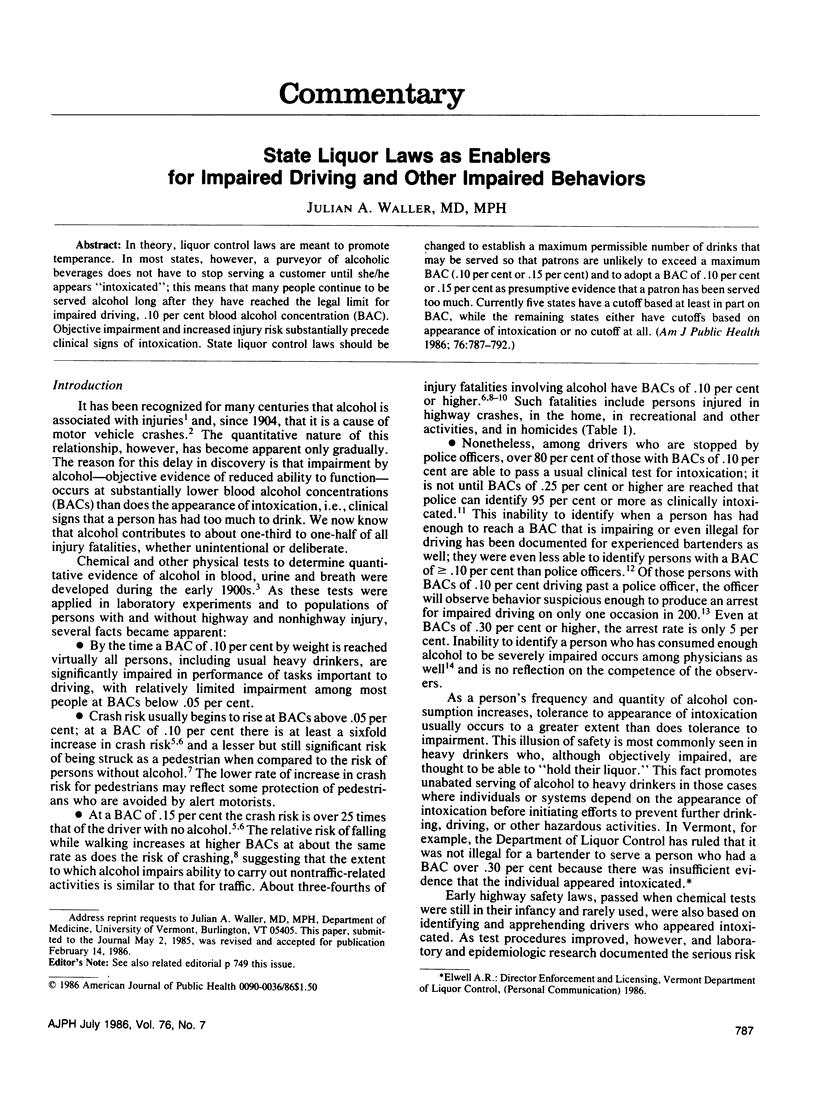
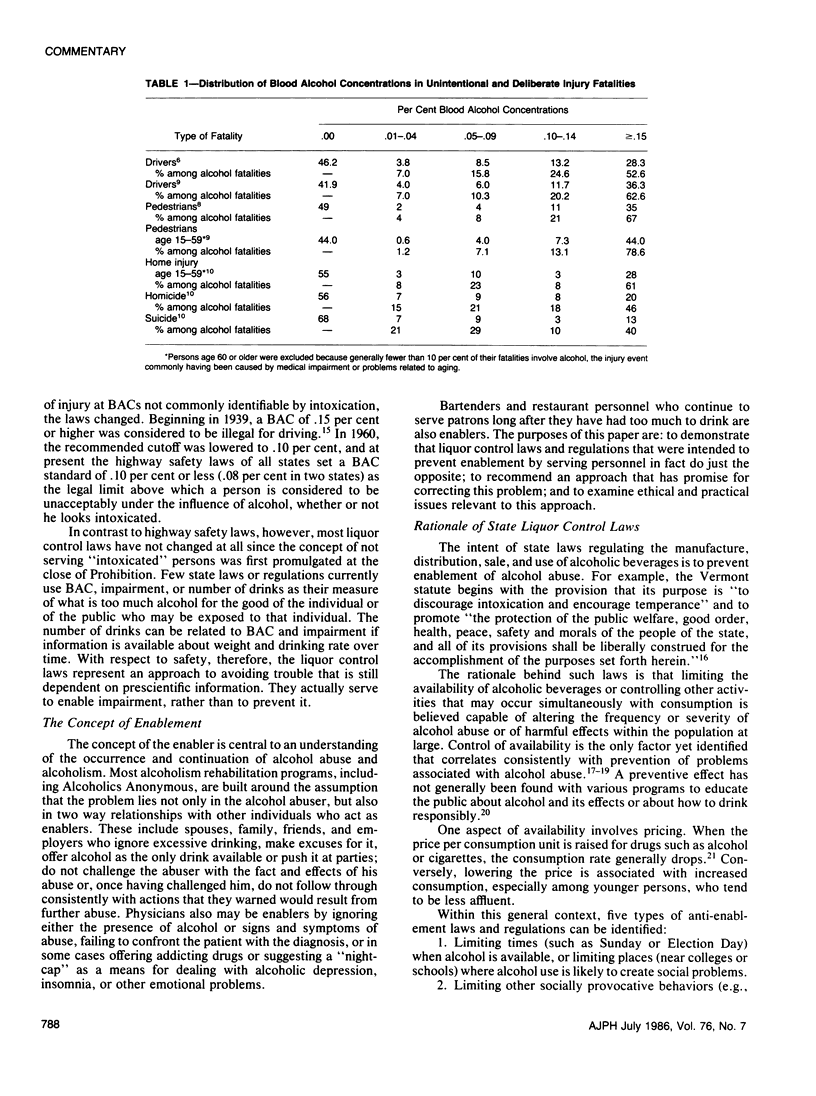
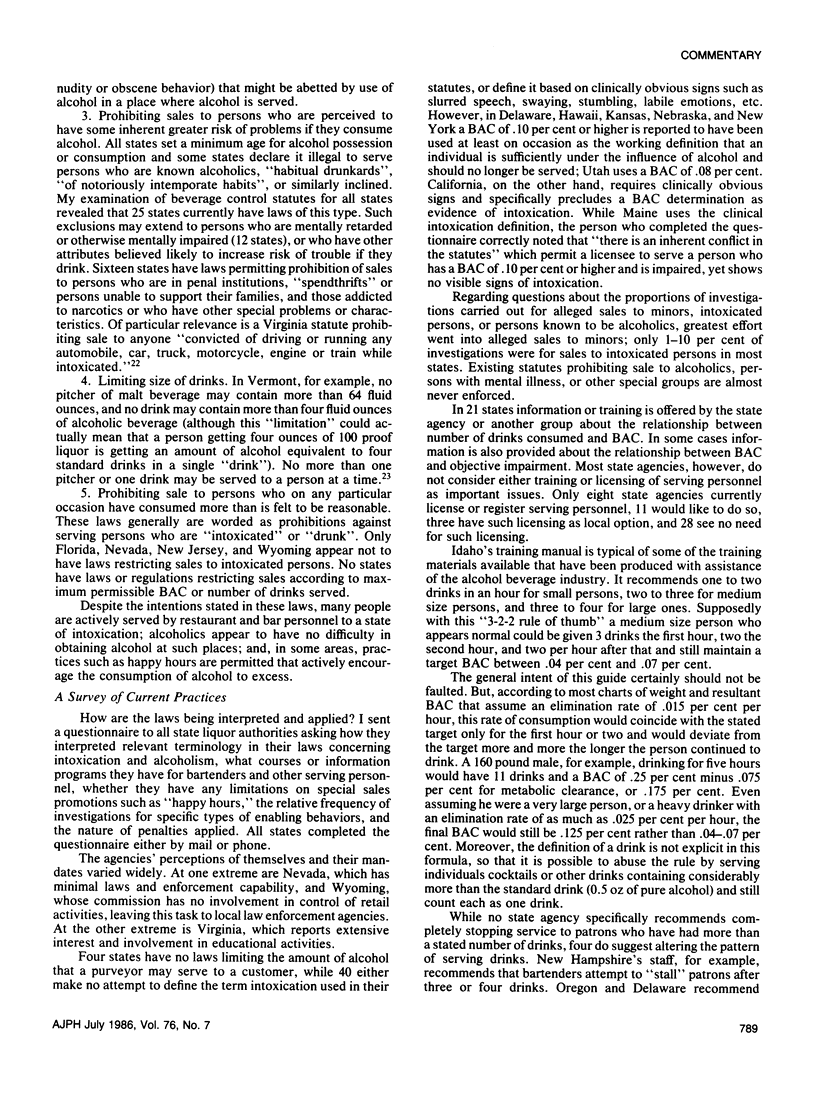
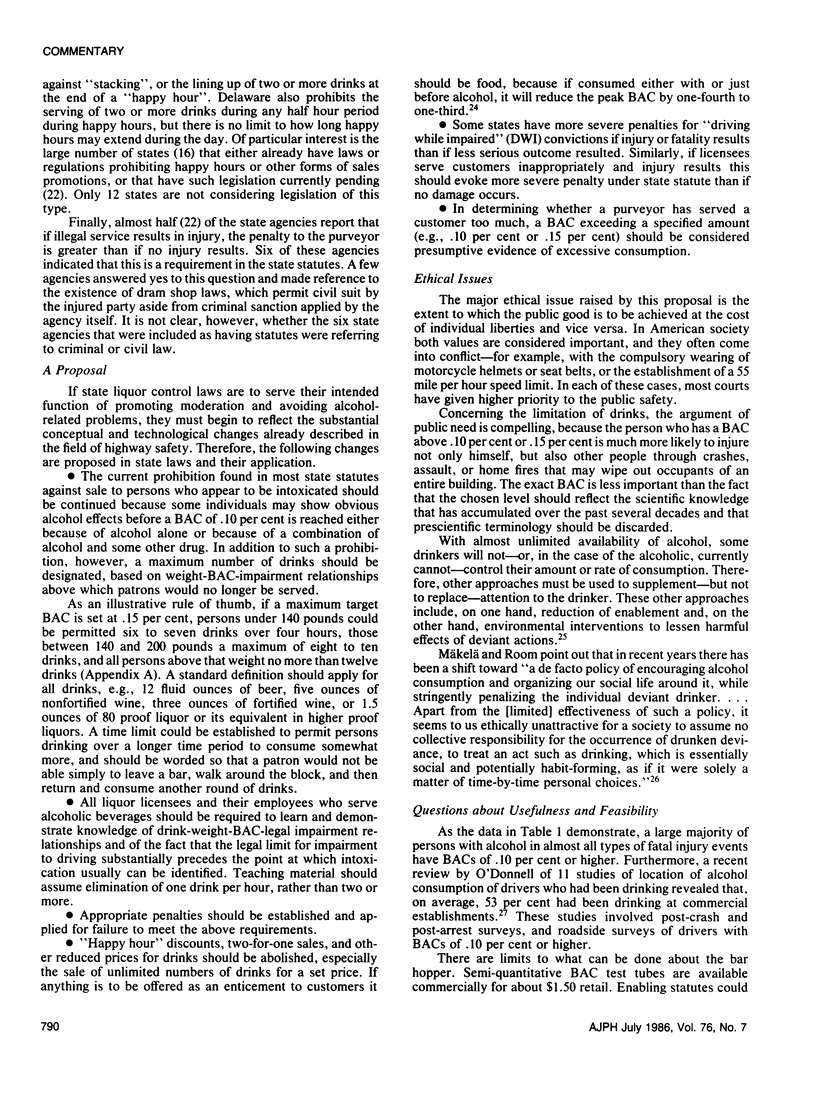
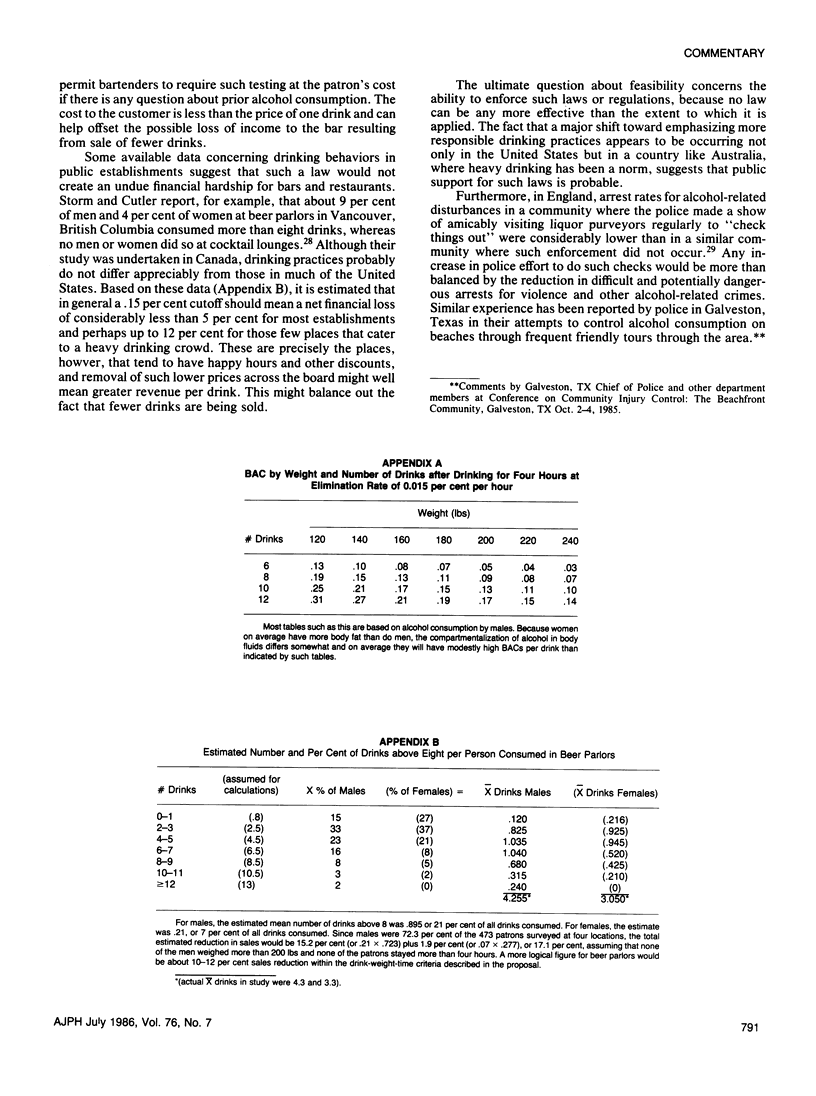
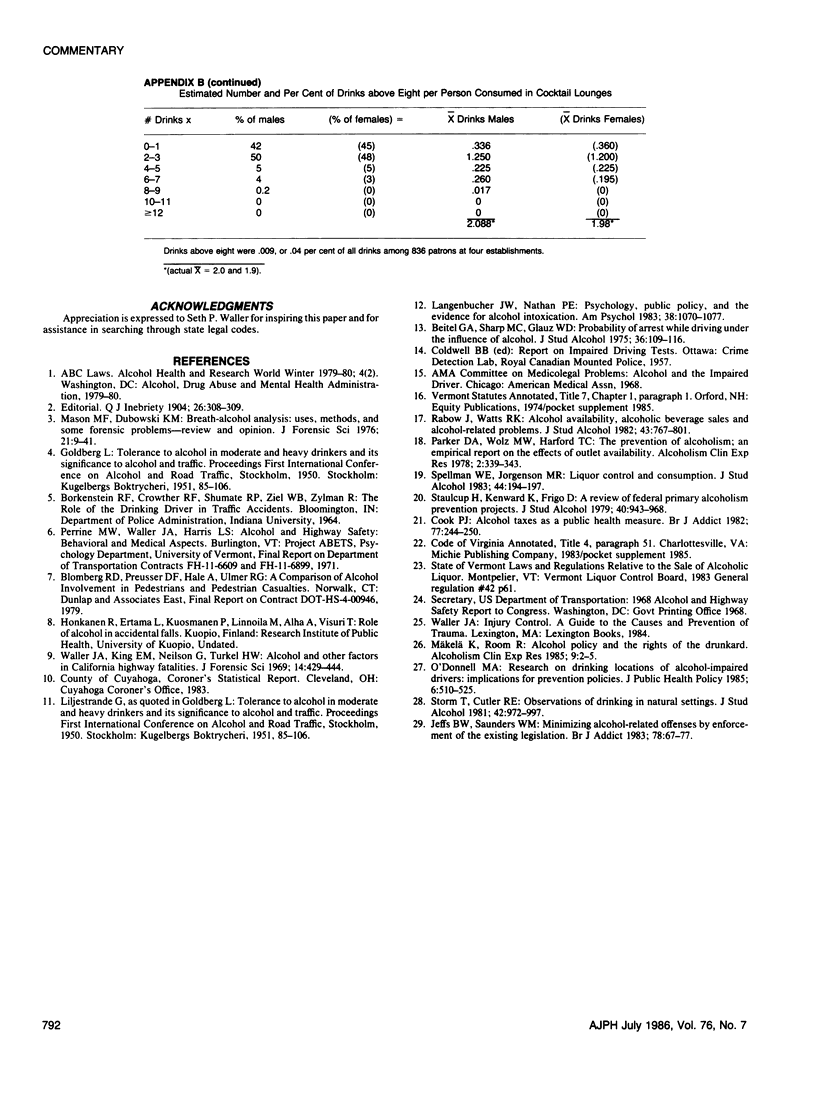
Selected References
These references are in PubMed. This may not be the complete list of references from this article.
- Beitel G. A., Sharp M. C., Glauz W. D. Probability of arrest while driving under the influence of alcohol. J Stud Alcohol. 1975 Jan;36(1):109–116. doi: 10.15288/jsa.1975.36.109. [DOI] [PubMed] [Google Scholar]
- Cook P. J. Alcohol taxes as a public health measure. Br J Addict. 1982 Sep;77(3):245–250. doi: 10.1111/j.1360-0443.1982.tb02453.x. [DOI] [PubMed] [Google Scholar]
- Jeffs B. W., Saunders W. M. Minimizing alcohol related offences by enforcement of the existing licensing legislation. Br J Addict. 1983 Mar;78(1):67–77. doi: 10.1111/j.1360-0443.1983.tb02482.x. [DOI] [PubMed] [Google Scholar]
- Langenbucher J. W., Nathan P. E. Psychology, public policy, and the evidence for alcohol intoxication. Am Psychol. 1983 Oct;38(10):1070–1077. doi: 10.1037//0003-066x.38.10.1070. [DOI] [PubMed] [Google Scholar]
- Mason M. F., Dubowski K. M. Breath-alcohol analysis: uses, methods, and some forensic problems--review and opinion. J Forensic Sci. 1976 Jan;21(1):9–41. [PubMed] [Google Scholar]
- Mäkelä K., Room R. Alcohol policy and the rights of the drunkard. Alcohol Clin Exp Res. 1985 Jan-Feb;9(1):2–5. doi: 10.1111/j.1530-0277.1985.tb05035.x. [DOI] [PubMed] [Google Scholar]
- O'Donnell M. A. Research on drinking locations of alcohol-impaired drivers: implications for prevention policies. J Public Health Policy. 1985 Dec;6(4):510–525. [PubMed] [Google Scholar]
- Parker D. A., Wolz M. W., Harford T. C. The prevention of alcoholism: an empirical report on the effects of outlet availability. Alcohol Clin Exp Res. 1978 Oct;2(4):339–343. doi: 10.1111/j.1530-0277.1978.tb04739.x. [DOI] [PubMed] [Google Scholar]
- Rabow J., Watts R. K. Alcohol availability, alcoholic beverage sales and alcohol-related problems. J Stud Alcohol. 1982 Jul;43(7):767–801. doi: 10.15288/jsa.1982.43.767. [DOI] [PubMed] [Google Scholar]
- Spellman W. E., Jorgenson M. R. Liquor control and consumption. J Stud Alcohol. 1983 Jan;44(1):194–197. doi: 10.15288/jsa.1983.44.194. [DOI] [PubMed] [Google Scholar]
- Storm T., Cutler R. E. Observations of drinking in natural settings: Vancouver beer parlors and cocktail lounges. J Stud Alcohol. 1981 Nov;42(11):972–997. doi: 10.15288/jsa.1981.42.972. [DOI] [PubMed] [Google Scholar]
- Waller J. A., King E. M., Nielson G., Turkel H. W. Alcohol and other factors in California highway fatalities. J Forensic Sci. 1969 Oct;14(4):429–444. [PubMed] [Google Scholar]


